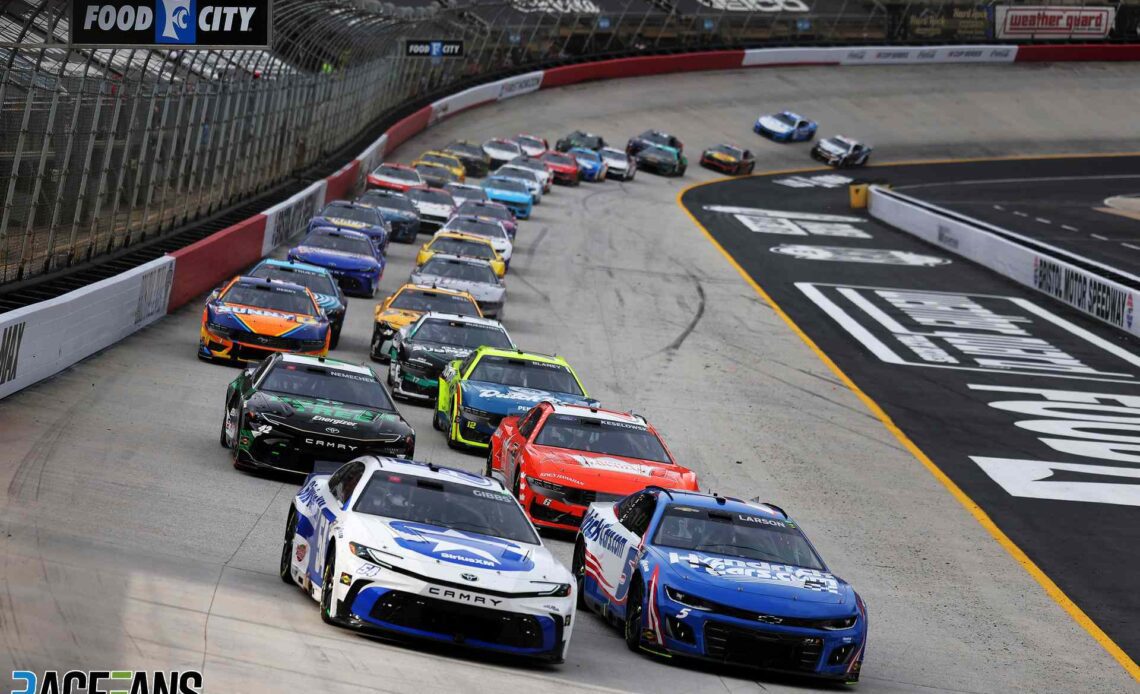Sunday’s NASCAR Cup race at Bristol Motor Speedway turned out to be one that the sport’s drivers, teams and fans will remember for years to come.
The tiny, 0.85-kilometre high-banked concrete oval has been notorious for decades for producing a wild style of racing – but yesterday’s 500-lap encounter was on another level.
As the highest level of stock car racing, NASCAR visits a great variety of ovals in addition to a handful of road and street tracks. From superspeedways like Daytona and Talladega to medium-sized ovals like Charlotte or Atlanta, cramped and chaotic short tracks like Martinsville, NASCAR’s Cup drivers have the full breadth of their driving talents tested like few other major racing series. But Bristol is unique.
Over the last 10 ten years or so, the famed short track in Tennessee has lost its lustre as far as racing excitement has been concerned. Following a reprofiling to add progressive banking to its corners which was met with heavy criticism, the track’s original configuration was restored. But it never quite recaptured the magic of the nineties and early 2000s.
For the last three years, the earliest of the two Cup races held at Bristol on the NASCAR calendar were run on dirt – a novelty for the premier level of stock car racing not seen since the seventies. However, even a change of surface was not welcomed by many of the series’ elite drivers. Cup champions Kyle Busch, Kevin Harvick and Kyle Larson were all public in their criticism, with Harvick branding the transition to dirt “ridiculous”.
In 2024, both of Bristol’s races returned to their original concrete layouts once more. And last weekend’s race provided a spectacle that many NASCAR fans raved about.
Advert | Become a RaceFans supporter and
What made Sunday’s race so exciting?
Soon after the race began, the 36-strong field realised they faced a challenging afternoon. Tyres showed extreme levels of wear, almost like setting tyre wear scaling to ‘2x’ rate on a racing game. Some drivers pitted for fresh rubber – either two or four tyres – after the first caution period on lap 25, not even ten minutes into the race.
The heavy degradation saw drivers burn through their tyres. Kyle Busch’s right-rear tyre became so worn he radioed in his concerns that it may let go completely – only for it to do exactly that a few laps later.
With drivers pitting more frequently than they had expected to before the race, some teams warned they would not have…
Click Here to Read the Full Original Article at RaceFans…

